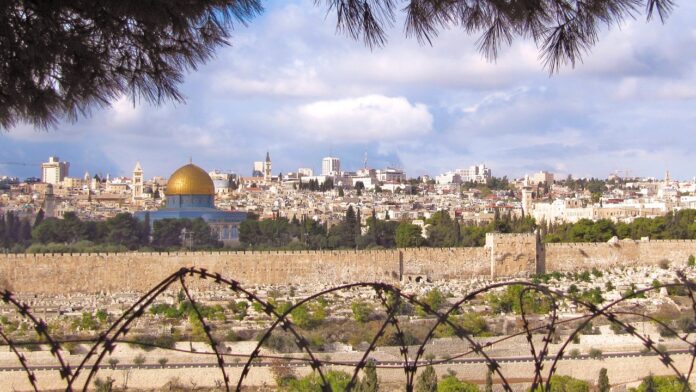Hamas: what you need to know about the group that attacked Israel
By Veronika Poniscjakova, University of Portsmouth
The group Hamas launched a surprise attack on Israel, crossing into the country from Gaza killing hundreds of civilians and taking dozens of hostages.
Military confrontations between Hamas and Israel are not unusual. Hamas has fought several wars with Israel since 2007 and has carried out thousands of deadly terrorist attacks.
In response to those attacks, Israel has also attacked Hamas repeatedly with air strikes and, with Egypt, blockaded Gaza by land, air and sea since 2007. This blockade limits what can be imported into Gaza, bans all exports and places strict limits on the movement of people entering and leaving the territory, significantly affecting living standards.
However, Saturday’s attack was unprecedented and on a scale not seen before.
Hamas, or in some cases its military wing, al-Qassam brigades, is designated a terrorist group by Israel, the US, the EU and the UK. It receives backing from Iran, which provides it with funds, weapons and training.
Hamas was formed during the first intifada, which took place from 1987 to 1993. This was a series of uprisings by Palestinians in the West Bank, the Gaza Strip and East Jerusalem to end Israel’s rule and establish an independent Palestinian state. It was largely non-violent but included instances of stone-throwing as well as civil disobedience and other tactics.
Hamas is an acronym for Harakat al-Muqawama al-Islamiya (Islamic Resistance Movement). It was started by Sheikh Ahmed Yassin, a Palestinian cleric, as an alternative to Palestinian Islamic Jihad (PIJ), an organisation that was committed to violent resistance against Israel and threatened to draw Palestinian support away from the Muslim Brotherhood, a transnational Islamist movement operating in the region.
Hamas is a fundamentalist and radical movement and its original charter from 1988 called for the destruction of Israel and the establishment of a Palestinian state. The charter also included incitement of violence against Jews, imposition of Sharia law and rejection of any peace initiatives.
Hamas updated its charter in 2017, removing references to killing Jews and appearing to soften its stance towards Israel by making references to establishing the Palestinian state along the lines of the June 4 1967 settlement.
However, the new charter said “Palestine, which extends from the River Jordan in the east to the Mediterranean in the west and from Ras Al-Naqurah in the north to Umm Al-Rashrash in the south.” This geography currently covers large areas of Israeli territory. “From the river to the sea,” remains one of Hamas’s slogans and implies a takeover of Israel in its entirety.
Hamas’s domestic rule
Hamas’s political wing governs the Gaza Strip, which is a part of the Palestinian territories. The other part is the West Bank, which is ruled by the Palestinian Authority (PA).
The PA is led by the Fatah party, which is the dominant faction of the Palestinian Liberation Organisation. Fatah is a secular, nationalist party that recognises Israel, whereas Hamas does not.
Hamas beat Fatah in the legislative election in 2006, the last legislative election that was held in the Palestinian territories. Hamas’s victory in the 2006 election was not recognised by the west, as Hamas is deemed by many in the west as a terrorist group that does not recognise Israel’s right to exist.
Ultimately, the group took power in Gaza anyway in 2007 while the PA has continued to govern in the West Bank. No election has been called since.
Hamas’s political rule over the Gaza Strip has seen some social, economic and political activities that somewhat improved people’s lives, such as running schools. However, Hamas’s corruption also has an impact, and much of the group’s focus and spending goes on attacking Israel rather than domestic programmes.
The political divide of the Palestinian territories, with PA governing the West Bank and Hamas governing Gaza, was deemed “the most damaging development that has happened since 1948, followed by the occupation of the West Bank and the Gaza Strip in 1967”, according to a survey of 1,270 adults by the Palestinian Center for policy and survey research in the Palestinian territories in June 2023.
The same poll found that more than half of Palestinians in Gaza and the West Bank would vote for Hamas over PA in a presidential election, while just one-third of Palestinians would choose PA.
Hamas enjoys these fairly high levels of support despite various human rights violations, including persecution and torture of human rights activists, women, LGBT people and political opponents. Whether support will remain high after this attack and the new blockade Israel has imposed on Gaza, cutting off food, electricity and water supplies, is uncertain.
It is not clear exactly why Hamas perpetrated the attack. Given the timing, it is likely the group wants to prevent the normalisation of a Israel-Saudi relationship. This peace deal, which has been months in the making, would lead to Saudi Arabia’s recognition of Israel. In exchange, Saudi Arabia would receive security guarantees from Israel’s closest ally, the US.
What is clear, however, is that now Hamas and Israel are at war.![]()
Veronika Poniscjakova, Senior Teaching Fellow, Military Education, University of Portsmouth
This article is republished from The Conversation under a Creative Commons license. Read the original article.



